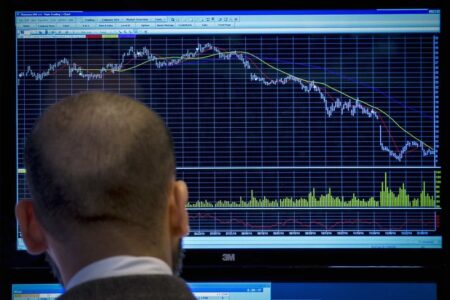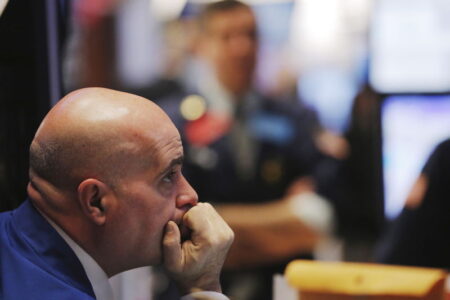© Reuters. FILE PHOTO: The logo of Australia’s biggest investment bank Macquarie Group Ltd adorns the main entrance to their Sydney office headquarters in Australia, October 28, 2016. Picture taken October 28, 2016. REUTERS/David Gray/File Photo
By Lewis Jackson
SYDNEY (Reuters) -Macquarie Group’s half-year profit fell to a three-year low as costs rose and it booked fewer asset sales, especially in green energy, but it said performance would lift in the second half and announced a A$2 billion ($1.29 billion) share buyback.
The first-half 2024 financial year results reported on Friday were a rare miss for the Australian firm, which prides itself on a global breadth stretching from retail banking to offshore wind and commodity trading. The Sydney-based financial conglomerate has not had a steeper first-half profit drop in more than a decade.
The results capped a run of “exceptional conditions” last year in the company’s commodity trading and asset management segments, buoyed by energy market volatility and ripe conditions for asset sales, respectively, Chief Financial Officer Alex Harvey told Reuters.
“We obviously know they were exceptional circumstances, that we didn’t expect those circumstances to repeat into 2024,” he said.
Macquarie had already trimmed its earnings forecasts twice since its record fiscal 2023 results announced in May, but the 39% fall in net profit to A$1.42 billion for the half ended Sept. 30 was well below a consensus estimate of A$1.77 billion compiled by Citi.
The company’s shares fell as much as 3% in early trading before regaining ground to close 1.8% higher, ahead of the Australian benchmark’s 1.1% rise.
The A$892 billion asset management division led the earnings decline, with profits down 71% to A$407 million as costs rose and Macquarie booked fewer sales amid weaker transaction conditions after a series of big deals last year.
The company held onto much of its portfolio of green assets in particular, some to seed a new fund, others for sales in the second half.
Chief Executive Shemara Wikramanayake told investors Macquarie expected to sell the assets without major discounts and to sidestep the problems facing other operators sandwiched between fixed-price contracts agreed in 2020 and 2021 and the subsequent inflation surge.
“Our portfolio we feel comfortable is very different to the situations where these large write-offs have been announced recently,” she said on an earnings call.
“These are operating assets with big (power purchase agreements) earning money and we’re seeing interest in them.”
Macquarie said the asset management division’s income should rebound in the second half to about the A$940 million it reported in the same period last year.
The other big decline came in the heavyweight commodities and global markets segment, where profits fell 31% to A$1.4 billion as a degree of normalcy returned to energy markets after the chaos last year unleashed by Russia’s invasion of Ukraine and turbulent weather in North America.
Wikramanayake told Reuters that energy markets had yet to respond to the Israel-Hamas conflict, but Macquarie was watching for any spillover to the broader Middle East and the oil market.
Despite the weaker result, the company’s board approved an on-market share buyback of up to A$2 billion and declared an interim dividend of A$2.55 per share, citing its ability to return excess capital to investors.
Investment bank Barrenjoey said the result was “disappointing” and it expected higher costs for people, technology and regulatory compliance to trigger earnings downgrades of between 5% and 10%.
The company said fees and commissions at investment banking arm Macquarie Capital were in line with the previous comparable period. Profit fell 28% to A$430 million.
The division guided to full-year transaction activity in line with the prior financial year, versus its earlier forecast activity would exceed that period.
Earnings in the banking and financial services division, home to Australia’s fifth-largest retail mortgage business, were a rare bright spot and rose 10% to A$638 million on the back of loan growth and stronger margins. ($1 = 1.5550 Australian dollars)
Read the full article here












